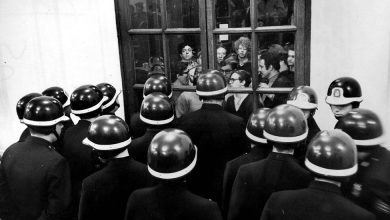Walking on Hot Coals: A Company Event Goes Wrong

Walking barefoot across hot coals, an ancient religious ritual popularized in recent years as a corporate team-building exercise, has once again bonded a group of co-workers through the shared suffering of burned feet.
In the latest case of the stunt going wrong, 25 employees of a Swiss ad agency were injured Tuesday evening while walking over hot coals in Zurich, officials said. Ten ambulances, two emergency medical teams and police officers from multiple agencies were deployed to help, according to the Zurich police. Thirteen people were briefly hospitalized.
“We very much regret the incident and we are doing everything we can to ensure that our employees get well again quickly,” Michi Frank, the chief executive of the company, Golbach, said in a news release. The company declined to provide more details of the event.
The sense that walking across burning coals requires a special inner state has motivated its transformation from a mystical spiritual tradition into a capitalist self-improvement project. The practice appears to have emerged separately thousands of years ago as a religious tradition in various places around the word.
In Greece, the tradition involves singing, dancing and fire-walking commemorates the rescue of icons from a burning church. Seemingly unrelated traditions also exist in Bali, Fiji, India and Japan.
Travel journalists have popularized it, sometimes in mystical terms. “The secret is concentration,” The New York Times reported in 1973 from a fire walk at a temple above Kyoto. “Either mind, body and environment are perfectly in harmony and all sequences of cause and effect become simultaneous, or they are not, and nothing will go right.”
In the years since, it has become a trope in movies and on television, notably as the signature group activity at seminars led by Tony Robbins, the life coach and motivational speaker.
“Now let me show you how to walk on fire,” Mr. Robbins likes to announce. He organizes long lines of people to walk across a short row of burning coals while leading participants in a bloodcurdling call and response of “Say yes!” and “Yes!”
“The purpose of the fire walk,” he explained at a 2017 event, “is just a great metaphor for taking things you once thought were difficult or impossible and showing how quickly you can change.”
Sometimes the metaphor gets a little too real. Dozens of attendees who walked on coals at Robbins seminars in 2012 and 2016 were injured, with some hospitalized with third-degree burns.
“It is always the goal to have no guests with any discomfort afterward but it’s not uncommon to have fewer than 1 percent of participants experience ‘hot spots,’ which is similar to a sunburn which can be treated with aloe,” a spokeswoman for Mr. Robbins told The Washington Post after the 2016 episode.
Pop culture has sometimes mocked the emancipatory potential of walking on fire. In a 2007 episode of the NBC sitcom “The Office,” Dwight Schrute attempts to blackmail his boss, Michael Scott, by not crossing hot coals at a corporate retreat, but instead remain torturously standing on them until he is granted a promotion. In “Ace Ventura 2: When Nature Calls” (1995), Jim Carrey’s character crosses the coals only by flinging someone else atop them and stepping on him.
But other depictions have touted the potential for spiritual transformation, including the first season finale of the CBS reality show “Survivor” in 2000. Along the way, reports of injuries have risen. In 2001, a dozen Burger King employees were hurt at a corporate retreat in Key Largo that featured walking on hot coals.
Was this a spiritual failing? Not likely. With proper instruction and preparation, experts say, walking across hot coals is not as dangerous as it looks.
“For the vast majority of people, maybe a blister the size of your little fingernail is the worst thing that can happen to you,” a physicist, David Willey, said in a phone interview on Thursday. Mr. Willey, who taught for years at the University of Pittsburgh, once shared the world record for the longest distance walked on hot coals.
Mr. Willey said that coals at 1,000 degrees are safe to walk on for 20 feet or more, adding that he walked on coals at that temperature for 495 feet without getting a blister.
On his website, he writes that at a brisk walk your bare foot comes into contact with coals for just around a second, which is not enough time for heat to be transmitted painfully from coals to the human flesh. Both the coals and skin have vastly lower thermal conductivity than, for instance, metal, he said.
But mistakes can lead to injuries. These include curling your toes and trapping a coal between them; walking on coals that are too hot; choosing the wrong type of wood, since some get hotter than others; and performing a fire walk on a beach, where your feet might sink into sand, Mr. Willey said.
The organizer of the event in Zurich, Thomy Widmer, said in an interview with the Swiss news outlet Blick that he had warned participants to not “stroll run or hop across” the fire, but to walk across it in a steady, quick “military step”-like clip. Mr. Widmer said he felt sorry for anyone who got hurt but denied that he had responsibility for the accident. “It could have been a great event,” he said.
Emma Bubola and Derrick Bryson Taylor contributed reporting from London. Christopher F. Schuetze contributed reporting from Berlin.



